Time for Council to Exert Authority over CPS Energy
The City Council of San Antonio and CPS Energy leadership have long operated under the assumption that the Council has no authority over the actions of CPS Energy. The City has issued approximately $6 billion in CPS Energy bonds based on city ordinances which authorized the bonds and constitute bond covenants with the bond holders. That is, they are contracts between the bond holders and the City of San Antonio.
Section 19 of the bond covenants, entitled “Management of the Systems,” states that the City agrees that “During such time as any Parity Bonds issued hereunder are outstanding and unpaid, the complete management and control of the systems shall be vested in a Board of Trustees consisting of five citizens, one of whom shall be the mayor.” Section 19 further provides for the Board to select successor members after they have served up to two five-year terms, and for those selected board members to be approved by the council.
City Council not using its powers
What apparently has not been understood by either the council or CPS Energy management is that, in Section 19 of the bond covenants, “The City Council reserves unto itself the absolute right at any time upon passage of an ordinance approved by a majority vote of its members to change the method of selection of and appointment to the board of trustees to direct selection by the City Council.” Section 19 further reserves in the City Council the following power: “The Board of Trustees … will ensure that policies adopted affecting research, development, and corporate planning will be consistent with City Council policy, and policies adopted by the Board of Trustees pertaining to such matters will be subject to City Council review.”
Thus, the Council can pass an ordinance that it, not the CPS Board, will directly appoint all the CPS Energy trustees. Additionally, the CPS Energy Board must follow Council policy with respect to the City’s 2019 Climate Action and Adaptation Plan ordinance, and with respect to the Council’s 2017 resolution adopting the goals of the Paris Climate Accords.
Additionally, if Council passes ordinances or resolutions concerning, for example, eliminating coal as an energy source by 2030 in order to meet its climate goals and to mitigate air pollution, CPS Energy will be obliged to follow that policy. (The City is now in federal non-attainment with respect to air quality). If Council wants CPS Energy to develop a rate system which promotes efficiency rather than the use of energy (“decoupling,” as has been adopted in about half the states), CPS Energy will be obligated to follow that policy. Those matters relate to and affect “research, development, and corporate planning” of CPS Energy.
Section 19 of the bond covenants gives the Board of Trustees “the full power and authority to make rules and regulations for the discontinuance of services upon failure of customers to pay therefor.” But Council can set policies under Section 3, paragraph 12 of the City Charter to “appropriate funds, in the exercise of a governmental function, for the assistance of needy persons to provide for them the basic necessities of life in accordance with categories of such persons as may be defined by ordinance.” Therefore, the Council can set policies that say that any household with income lower than 200% of the federal poverty rate should receive special consideration before any disconnection of services.
Moreover, the Council clearly has rate approval authority and can therefore disapprove any rate plan or rate proposal by CPS Energy Board. And paragraph 13 of the City Charter gives the Council the power to define and prohibit the maintenance of any nuisance. The coal plants, accounting for 40% of the region’s air pollution problem, qualify as a nuisance and health hazard. Similarly, paragraph 13 of the City Charter gives Council the power to “prohibit, abate, suppress, and prevent all things or any acts detrimental to the health, comfort, safety, convenience and welfare of the inhabitants of the City.” Additionally, under paragraph 13 the Council has power “to exercise jurisdiction over all property owned by the City,” including CPS Energy and its assets, and has the power “to acquire, own, operate and maintain any character of public utility by any lawful means.” Thus, the City Charter gives the Council extensive powers over the operation of CPS Energy.
The San Antonio City Council has never exercised the powers which it has reserved in the bond covenants and in the Charter with respect to CPS Energy. It has relinquished its powers to an unelected board with no special skills or knowledge concerning the operation of a utility, and insulated that board from public scrutiny. In essence, it has turned over to CPS Energy staff all the decision-making power on this major asset of the City, which pays 30% of the City’s budget, and which significantly affects every citizen in the region.
It is well past time for the City Council to exercise the powers which it has reserved to itself. The City Charter, section 2, states that “all powers of the City shall be vested in an elective Council.”
by Darby Riley, Alamo Group Political ChairCPS Energy and the Spruce Coal Plant
CPS Energy and shutting down the Spruce coal plant are issues the Alamo Group has been working on for years. Our August General Meeting will feature a panel discussion on this topic with plenty of opportunity for Q&A.
Tuesday, August 17th
6:00 p.m.
Online via Zoom
Zoom Meeting Details
| Informal get-to-know-you | 6:00 pm to 6:15 pm |
| Announcements | 6:15 pm to 6:30 pm |
| Featured Program | 6:30 pm to 8:00 pm |
RSVP by Sunday, August 15th, 2 pm for a confirmation email and Zoom link. Put “Alamo Group RSVP” in the subject line to ensure the RSVP is not overlooked, and send to: AlamoGroupMeetings@lonestar.sierraclub.org
About our Speakers
Chrissy Mann works for the Sierra Club Beyond Coal Campaign. Mario Bravo is the City Councilmember for District 1. Deedee Belmares works with Public Citizen, Texas .
This meeting is free and open to the public.
Olympic National Park: a Few Pictures of the Mountains
The range of experiences in Olympic National Park is vast. This article provides a tiny glimpse of the east side of the park, including the mountains of the Olympic Range. An article in the February 2021 issue has bits about the Pacific coast beaches in the park, and another one in the August 2020 issue features the rain forests. Here is the park's website and the park map (PDF).
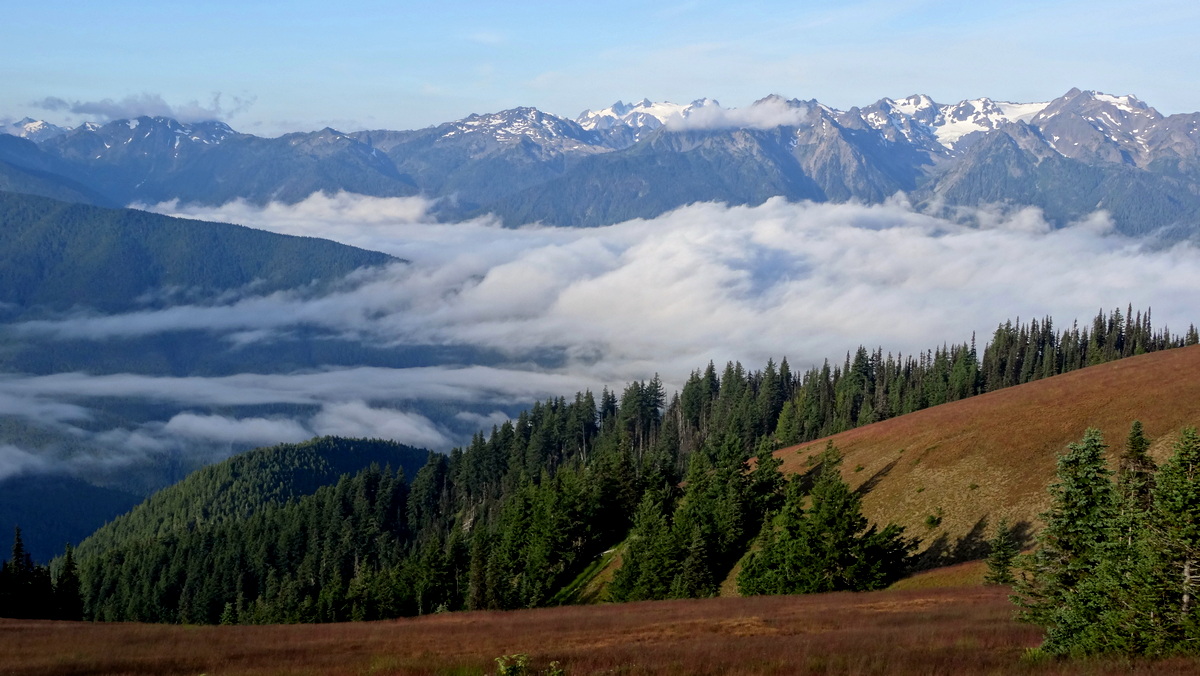
The Olympic Mountains in the center of the national park result in a rain shadow effect. So the town of Sequim, on the Strait of Juan de Fuca northeast of the park, averages 16" rain per year, while the park visitor center on the Hoh River gets 144"-170" per year. Consequently, the brown vegetation in the picture above contrasts with the rain forest pictures in the above-mentioned August 2020 issue.
Visiting
There are grand vistas from Hurricane Ridge like in the picture above. From there, hikes to Hurricane Hill and Mount Angeles are popular. And there is the drive out Obstruction Road and hikes from Obstruction Point (see the last picture below).
Kalhane Ridge is accessible from Heart O' the Hills campground and Hurricane Ridge Road (see the next two pictures). It is much easier to get up to the ridge from Hurricane Ridge Road than doing the amazing masochistic route from Heart O' the Hills. And there are various hikes from Deer Park campground at the end of Deer Park Road, which is east of Hurricane Ridge Road.
There are interesting looking hiking loops from the roads past Sol Duc and Altair campgrounds. On my trip the former was "reservations only" and full, and the latter was closed due to a road washout but is now open. On the east side there are backpacking routes into the park through Buckhorn, Brothers and Skokomish wildernesses in Olympic National Forest. See the map!
And there are backpacking routes through the mountains of course. These were beyond my interest level due to time limitations and age.
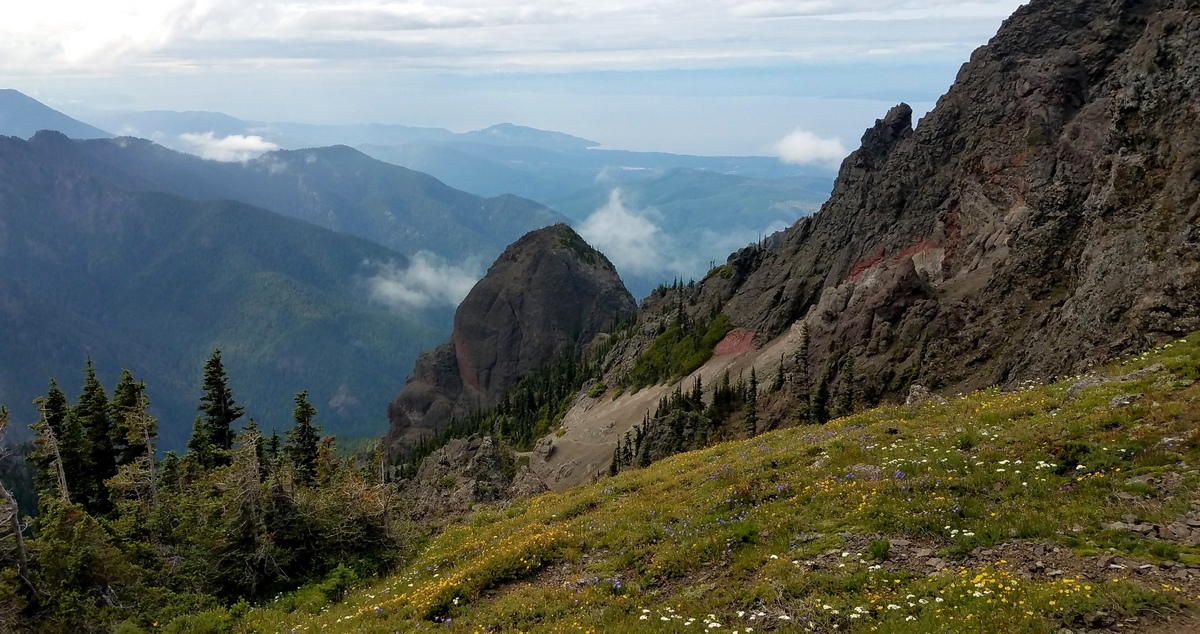
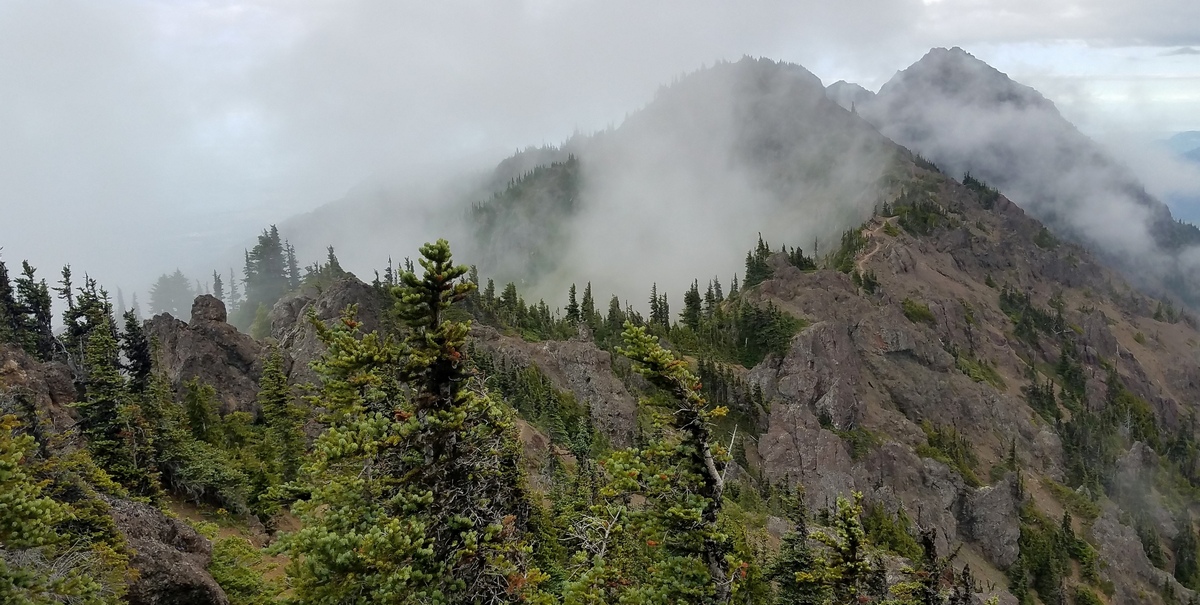
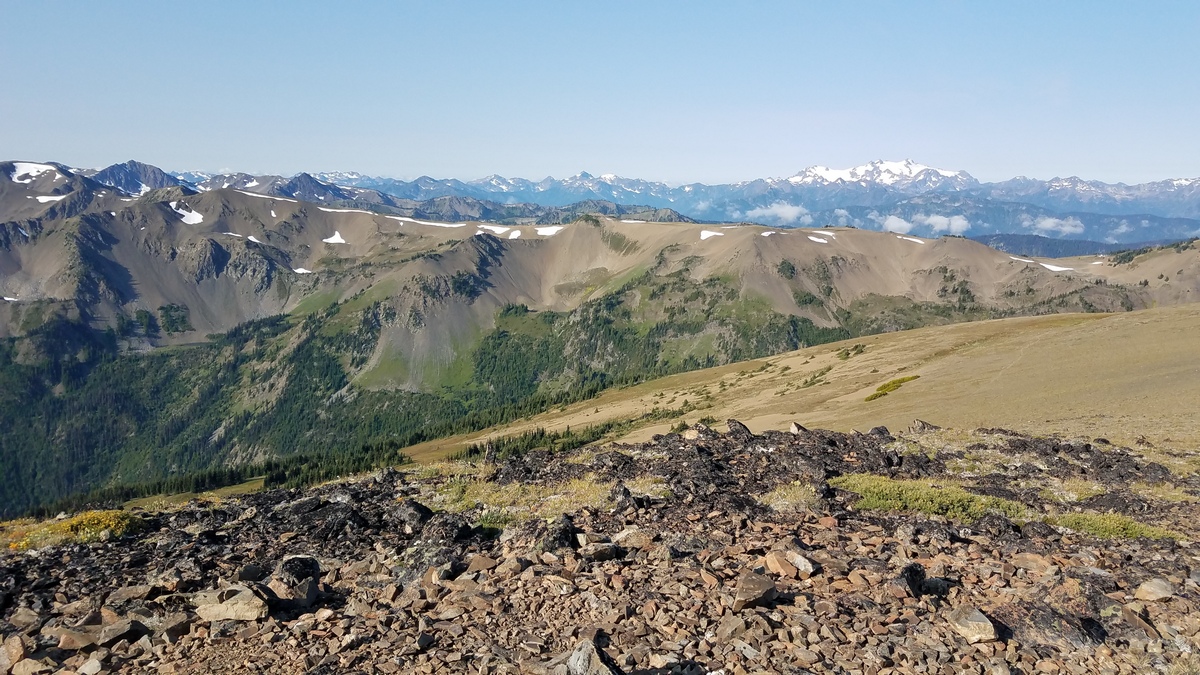
Transportation Decisions Are Needed
Since we are in a transition time for transportation decisions, I have put together a sampling of new information relevant to these decisions. First, here is the Victoria Transport Policy Institute webpage. It is a terrific transportation resource with news that there will be a new book coming out very soon
Next, I refer you to this story about cracking batteries on Proterra buses: Cracking battery buses raise questions about electric transit .
Finally, Austin's Project Connect page has information regarding voters' approval for funding of several new light rail lines and more. Some of that cost will be borne by the federal government.
Barbara McMillin, Alamo GroupTransportation Chair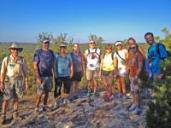
Outings: The Call of the Wild
Visit the Alamo Sierra Club Outings page on Meetup for detailed information about all of our upcoming Sierra Club Outings.
The Alamo Sierran Newsletter
Richard Alles, Editor
Published by The Alamo Group of the Sierra Club, P.O. Box 6443, San Antonio, TX 78209, AlamoSierraClub.org.
The Alamo Group is one of 13 regional groups within the Lone Star Chapter of the Sierra Club.
Changed your contact information?
If you're not sure whether the Sierra Club has your current email address, send an email to Member Services with your name and address and/or member ID (see Locating Your Member ID) so they can add your email address to your member record.
Have you moved? Let us know by sending your old address, your new address and your member ID to: address.changes@sierraclub.org.
Go online for the latest news and events
 |